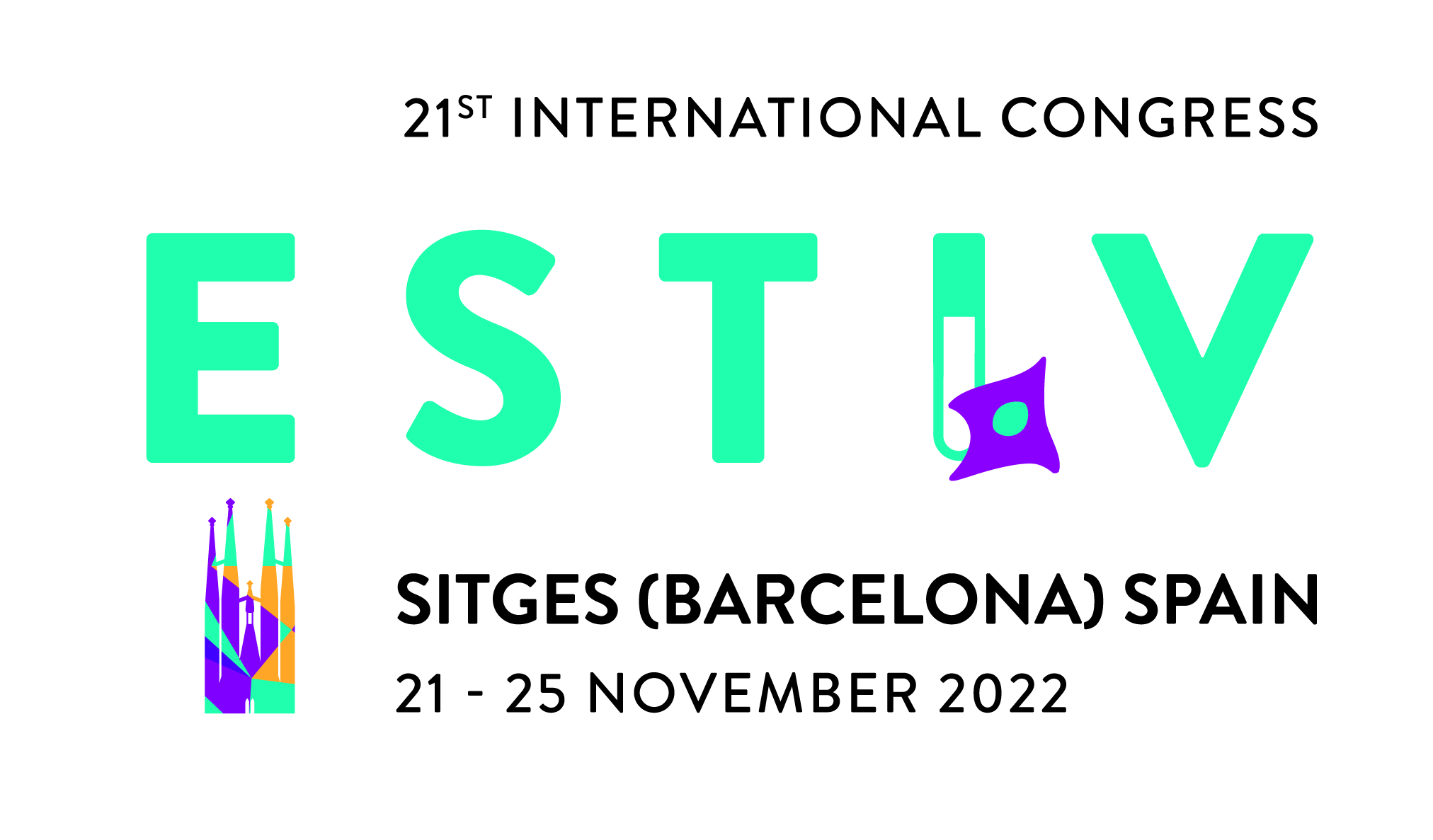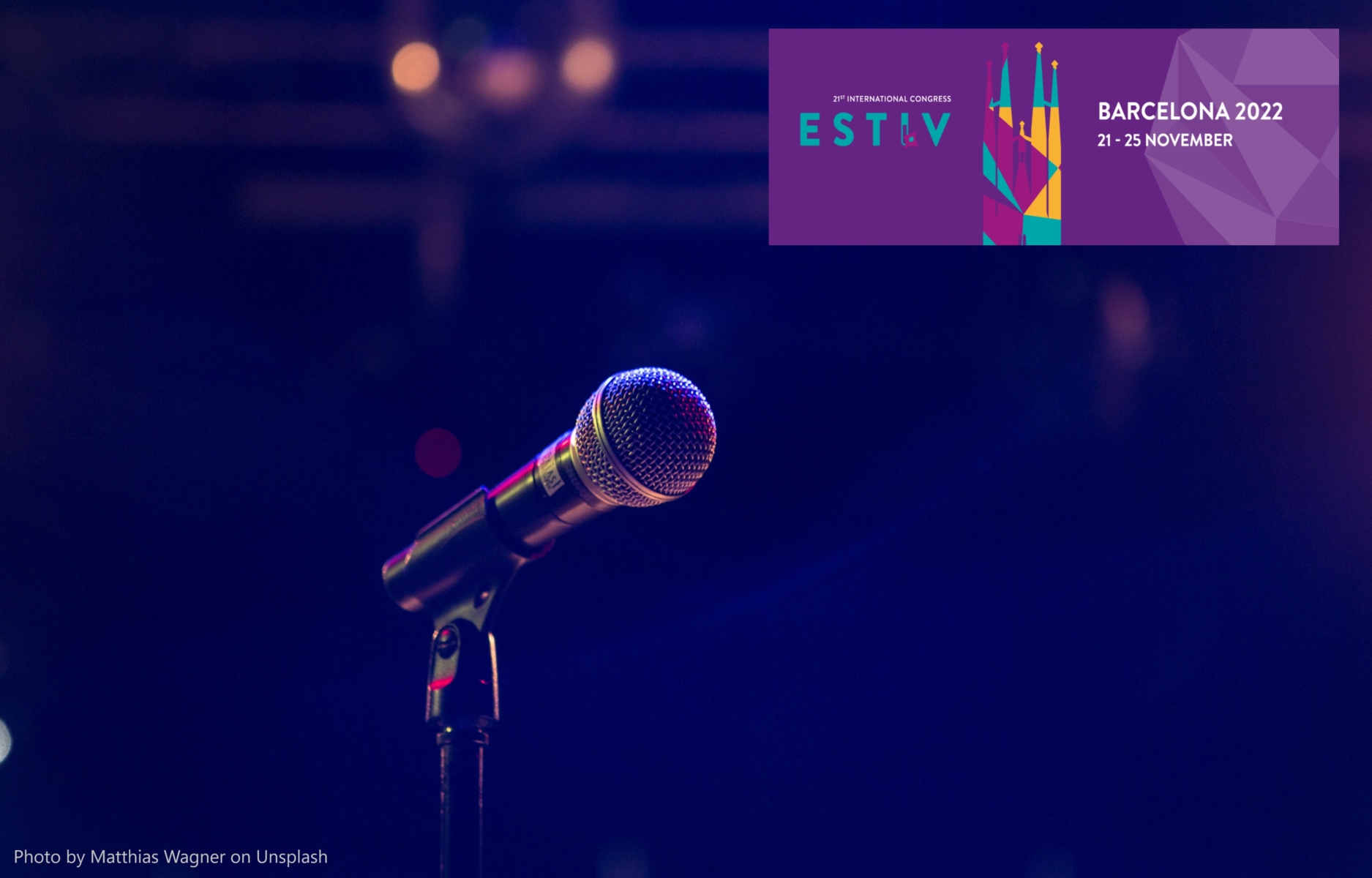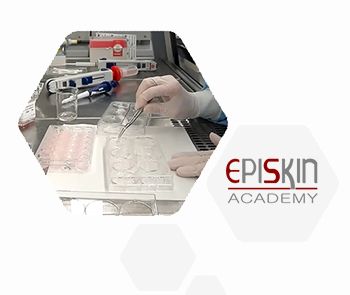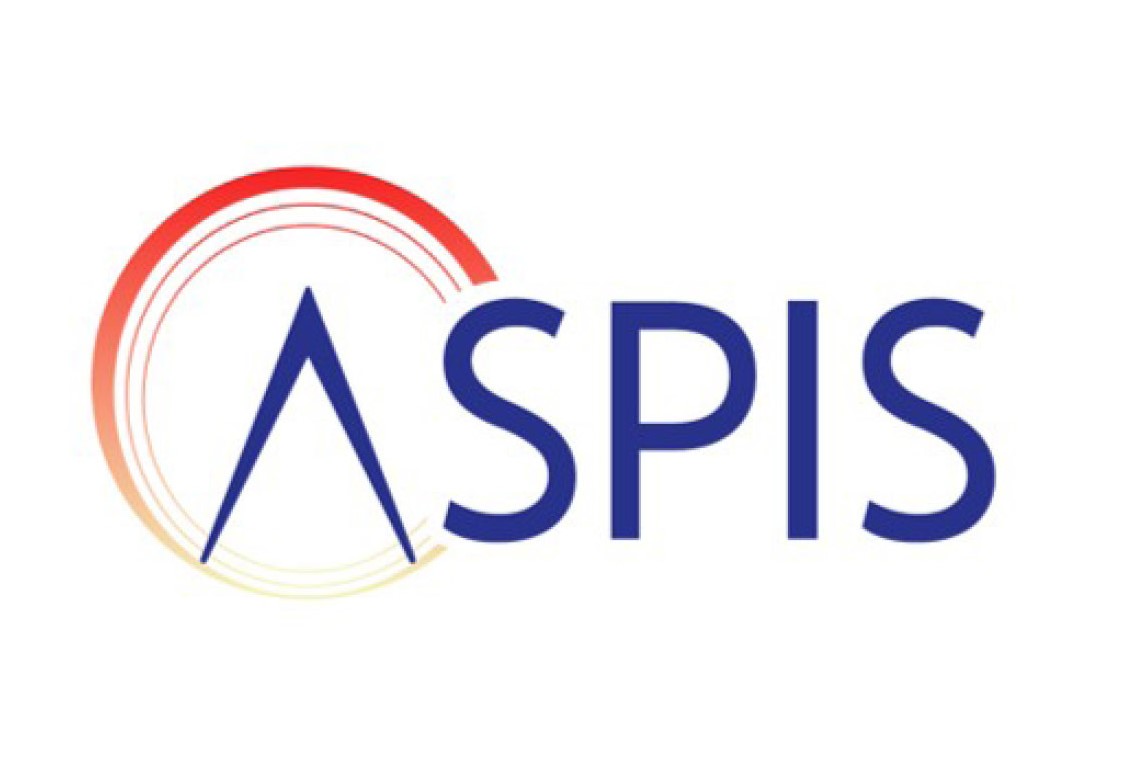The complete ESTIV 2022 programme including practical information is now available. Download the programme below. The full programme does not include the poster list. You can download the poster porgramme separately (see button below).
Instructions for Oral and Poster Presenters and Chairs of the sessions
Poster print service:
If you would like to use the poster printing service, please find below the correct procedure.
1. Send an email to Lidia Anta via bcncongress@bcncongress.com with a PDF attachment of the poster.
2. Make sure that the date of the congress and the name of the congress are clearly mentioned in the e-mail.
3. Clearly state in the e-mail the name that should be on the poster tube. This is the person who will collect the poster.
3. The poster can be picked up at the registration desk during the congress days.
The cost is € 74,25 and should be paid after ordering the poster print.
The poster will be printed on A0 size and weigh 150 grams.
The deadline for this service is 11th November 2022.
Scientific Programme – Themes
Invited Speakers
- Bio-engineering, stem cells and disease models
- Models, biomarkers and assays for endocrine disruption and developmental toxicity
- Challenges in cosmetic regulation
- Models, biomarkers and assays for systemic and immune toxicity
- Organ-on-chip models
- Application of non-animal methods and concepts in food risk assessment (ILSI/ESTIV- session)
- Computational toxicology – in silico modelling, read-across, artificial intelligence and machine learning
- Local toxicity testing (safety and efficacy)
- Toxicokinetics and in vitro – in vivo extrapolation
- In vitro systems to assess respiratory toxicity
- In vitro methods for safety testing of biopharmaceuticals/biotherapies/vaccines
- Knowledge sharing and education
- Developmental Neurotoxicity (DNT)
- Implementation of NAMs into regulatory frameworks
- In vitro methods for safety assessment of medical devices
- In vitro COVID-19 research/lung and cardiovascular models
- Debate session: Building scientific confidence in NAMs Toward Regulatory Acceptance
- Poster teaser session
- Sponsored sessions
- Career development session
- JSAAE – sponsored session – Asian progress in 3Rs
- ILSI/ESTIV- sponsored lunch session
Scientific Programme – Session details
The programme may still be subject to minor changes – the final version (full programme) is now available (click here)
Monday, November 21st, 2022
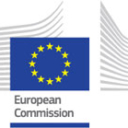
09:00-13:00: Pre-conference workshop – Bridging across methods in the biosciences (BeAMs): the opportunity of COVID-19 (organised with JRC)
Chairs: Dr Annamaria Carusi & Dr Sofia Batista Leite
13:00-14:00: Lunch break
14:00-14:20: Opening of ESTIV 2022 Congress
Chairs: Dr Helena Kandarova (CEM SAS, Bratislava, Slovakia – ESTIV President) & Dr João Barroso ( JRC, Ispra Italy -ESTIV Vice-president)
14:20-15:10: Keynote lecture by Dr Timothy Allen (University of Cambridge, Cambridge, UK / Ladder Therapeutics, Toronto, Canada)
Use of Artificial Intelligence and Machine Learning in the Chemical Risk Assessment
Chairs: Dr Helena Kandarova (CEM SAS, Bratislava, Slovakia – ESTIV President) & Dr João Barroso (JRC, Ispra Italy -ESTIV Vice-president)
15:10-15:15: ESTIV Early Scientific Career Award ceremony 2020/2022
Chairs: Dr Helena Kandarova (CEM SAS, Bratislava, Slovakia – ESTIV President) & Dr João Barroso (JRC, Ispra Italy -ESTIV Vice-president)
15:15-16:00: BEMF Award ceremony and BEMA Lecture
Chairs: Prof. Stina Oredsson (Björn Ekwall Memorial Foundation, Sweden)
16:00-16:30: Coffee break, visiting exhibition area & poster viewing
16:30-18:30: Session 1 – Bio-engineering, stem cells and disease models
Chairs: Prof. Peter Loskill (University of Tübingen, Germany) & D. João Barroso (JRC, Ispra, Italy – ESTIV Vice-president)
- Peter Loskill – Recapitulating Complex Human Tissues using Organ-on-chip and Organoid Technologies – (Invited lecture)
- Lena Smirnova – iPSC-derived Brain Organoids as versatile research tool for Developmental Neurotoxicity and Neurological disorders
- Alec Salminen – Evaluation of 3D-Bioprinted Human Skin Equivalents for In Vitro Permeation Testing
- Raquel A. Martinez Garcia de la Torre– iPSC-derived hepatic stellate cells for in vitro fibrosis modelling
- Aafke Janssen – Transport of per-and Polyfluoralkyl substances (PFAS) across human induced pluripotent stem cell (HIPSC) derived intestinal epithelial cells in comparison with human primary intestinal epithelial calls and Caco-2 cells
19:00-20:30: Welcome reception (including finger food) (sponsored by ESTIV-ASCCT) & poster session
Tuesday, November 22nd, 2022
8:30-10:30: Session 2a – Models, biomarkers and assays for endocrine disruption and developmental toxicity
Chairs: Dr Thomas Knudsen (US EPA, Durham, USA) & Prof. Arno Gutleb (LIST, Luxembourg, Luxembourg)
- Thomas Knudsen – Computational systems models for human-predictive developmental toxicity (Invited lecture)
- Ingrid Langezaal – Upcoming validated mechanistic in vitro methods for the identification of thyroid disruptors.
- Andrew Tindall – Interlaboratory OECD Validation of the Rapid Androgen Disruption Adverse outcome Reporter (RADAR) assay
- Nina Hambruch – Validation of a New Approach Method (NAM) testing DIO1 inhibition using a human microsome-based, colorimetric assay
- Erica Buoso – Immunological implications of Endocrine Disrupting Chemicals (EDCs): RACK1 as a bridge between the endocrine and the immune systems
- Predrag Kukic – Beyond AOPs: A Mechanistic Evaluation of NAMs in DART Testing
8:30-10:30: Session 2b – Challenges in cosmetics safety
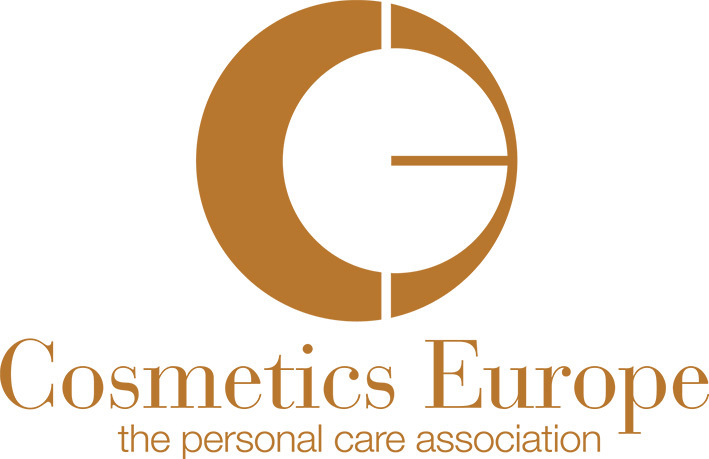
Chairs: Dr Nathalie Alépée (L’Oréal, Paris, France) & Dr Erwin Van Vliet (Houten, Utrecht, Netherlands)
- Jay Ingram – Global Regulatory Landscape for Cosmetics – Challenges and Opportunities in Utilising NAMs
- Els Adriaens – Overview of New Approach Methodologies for eye hazard identification according to UN GHS
- Nathalie Alépée – Application of an updated Next Generation Risk Assessment (NGRA) framework for skin allergy: a case study for Diethanolamine
- Véronique Poulsen – New challenges for environmental safety of cosmeticscccccccssssssssssssssssssssssssssssssssssssssssssssssssssssssssssssssssssssssssssssssss ssssssssssssssssssssssssssssssssssssssssssssssssssssssssss
10:30-11:00: Coffee break, visiting exhibition area & poster viewing
11:00-13:00: Session 3a – Models, biomarkers and assays for systemic and immune toxicity
Chairs: Prof. Emanuela Corsini (Universita degli Studi di Milano, Milan, Italy) & Dr Jochem Louisse (Wageningen University, Wageningen, The Netherlands)
- Emanuela Corsini – New approach methodologies in immunotoxicology with a focus on immunosuppression (Invited lecture)
- Herve Groux – In vitro evaluation of both skin irritation and sensitization hazard of mixtures and finished products using the SENS-IS assay.
- Laura Suter-Dick – Multicellular, liver microtissues reliably depict key events of the liver fibrosis AOP
- Birgitte Lindeman – Immunotoxicity of crystalline silica particles: in vitro screening models and use of high-dimensional immune cell profiling
- Sabina Burla – A 3D Alveolar In Vitro Test System for the Prediction of Chemical Respiratory Sensitizers
- Andy Forreryd – In vitro assessment of skin sensitizing potential of process-related impurities in polymeric materials during product development.
11:00-13:00: Session 3b – Organ-on-a-chip & Microphysiology systems
Chairs: Dr Sofia Batista Leite (JRC, Ispra, Italy) & Dr Pau Sancho-Bru (Institut d’Investigacions Biomèdiques August Pi i Sunyer (IDIBAPS), Barcelona, Spain)
- Silvia Scaglione – A new immunocompetent OOC platform for culturing 3D human tissues with capillary flow-driven immune cells and investigating their cross-talk
- Julia Boos – Integration of human-stem-cell-based embryoid bodies into a microfluidic multi-tissue platform for systemic embryotoxicity testing
- Ilka Maschmeyer – Multi-Organ-Chip Technologies: The effect of application route on the metabolism
- Aude Rapet – A breathing lung-on-chip model: an advanced in-vitro tool for drug testing and toxicology
- Leopold Koenig – A microfluidic bone marrow chip for the safety profiling of complex large molecules in pre-clinical drug development
- Roberta Visone – A human beating heart on chip for online screening of drug cardiotoxicity
13:00-14:00: Lunch break, visiting exhibition area & poster viewing
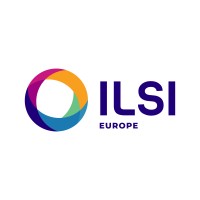
13:00-14:00: ILSI/ESTIV- sponsored lunch session: Application of non-animal methods and concepts in food risk assessment
Chairs: Dr Isabelle Guelinckx (ILSI Europe, Belgium) & Dr Helena Kandarova (CEM SAS, Bratislava, Slovakia)
14:00-16:00: Session 4a – Computational toxicology – in silico modelling, read-across, artificial intelligence and machine learning
Chairs: Prof. Olivier Taboureau (University Paris Diderot, Paris, France) & Dr Tim Allen (Ladder Therapeutics, Toronto, Canada)
- Olivier Taboureau – Bioinformatics and Network science applied in toxicology (Invited lecture)
- Thomas Hartung – The key role of computational toxicology for the 21st Century 2.0 (Invited lecture)
- Ignacio Tripodi – Turning AOPs into testable hypotheses with natural language processing and tissue-specific knowledge graphs
- Prachi Pradeep – Integrating in vitro and in silico data for screening and characterization of tattoo pigments for human health risk assessment
- Donatella Carpi – Modelling in vitro time-concentration response of gene expression to chemical exposure
14:00-16:00: Session 4b – Local toxicity testing (safety and efficacy)
Chairs: Dr Montserrat Mitjans (Universitat de Barcelona, Barcelona, Spain) & Dr Helena Kandarova (CEM SAS, Bratislava, Slovakia)
- Els Adriaens – A new OECD guideline based on Defined Approaches for Eye Hazard Assessment of non-surfactant liquids combining Physicochemical Properties and OECD-approved Test Methods
- Manon Barthe – Modeling skin inflammation using 2D and 3D in vitro models
- Elena Grasselli – In vitro investigation of aluminum bioavailability after exposure of oral care products
- Eric Andres – Integrative evaluation strategy for skin sensitization : the mixtures challenge
- Renato Ivan de Ávila – Application of a next-generation risk assessment framework for skin sensitisation using new approach methodologies (NAMs): geraniol case study
16:00-16:30: Coffee break, visiting exhibition area & poster viewing
16:30-17:30: Early Stage Researcher Session 1
Chairs: Dr Erwin van Vliet (Houten, Utrecht, Netherlands) & Dr Pau Sancho-Bru (Institut d’Investigacions Biomèdiques August Pi i Sunyer (IDIBAPS), Barcelona, Spain)
- Méryl Roudaut – A single procedure to generate functional hiPSCs-derived liver organoids – Towards an innovative tools suitable for drug screening
- Jördis Klose – In vitro screening for developmental neurotoxicity of flame retardants using a 3D human primary neural progenitor cell assay: a case study
- Yanying Ma – Predicting developmental toxicity of pyrethroid insecticides in vitro using human-induced pluripotent stem cells
- Rima Souki – Characterization of extracellular vesicles released by peripheral blood mononuclear cells exposed to polycyclic aromatic hydrocarbons and study of their interaction with endothelial cells
- Michelle Jäschke – Towards a personalized kidney-on-a-chip derived from induced pluripotent stem cells
17:30-18:30: Early Stage Researcher Session 2
Chairs: Dr Montserrat Mitjans (Universitat de Barcelona, Barcelona, Spain) & Dr. Marketa Dvořáková (NIPH Prague, Prague, Czech republic)
- Heart Avner Ehrlich – The Electro-Mitochondrial Coupling of a Microphysiological Human
- Ahmet Kati – Affinity prediction between cosmetic ingredients and CD54/CD86 receptors by molecular docking: A novel approach to predict skin sensitisation potential
- Filipa Leal – Electrospun scaffold-based approaches for toxicological screening in skin, pulmonary, and intestinal epithelial tissue
- Zachary Sitte – Developing a method to incorporate laminar flow into scaffold-based 3D cell cultures for more physiologically relevant nutrient and drug delivery.
- Marie Frerejacques – Kidney organoids for toxicology: application to the development of Adverse Outcome Pathway (AOP) study of nephrotoxicity induced by uranium
16:30-18:30: Sponsored session
Chairs: Erin Hill (IIVS, Gaithersburg, MD, USA) & Dr Clive Roper (Roper Toxcilogy Consulting Limited, UK)
- Angela Hvitved – Research support to replace animal models: the Alternatives Research & Development Foundation (ARDF) Annual Open grant program
- Salvatore Simmini – Organoids and their application in toxicity studies

- Caio Valeriano – Technologies Bioprinting ‐ a paradigm shift in the field of toxicology testing

18:30 – 19:30 Career development session
19:30 Wine reception in the poster area (sponsored by University Barcelona)
Wednesday, November 23rd, 2022
08:30-10:30: Session 5a – Toxicokinetics and in vitro–in vivo extrapolation
Chairs: Dr Nicole Kleinstreuer (NICEATM, Durham, USA) & Dr Jochem Louisse (Wageningen University, Wageningen, The Netherlands)
- Nicole Kleinstreuer – An Open, Accessible Interface for Contextualizing Chemical Effects (Invited lecture)
- Andreas Schepky – Crucial role of Toxicokinetics and ADME methods in the application of Next-generation Risk Assessment
- Ans Punt – Generic PBK models based on in vitro and in silico input data: How to gain trust in the results?
- Sophie Werner – Use of a 3d-in vitro model for the assessment of liver metabolism related to neurotoxicity of occupationally relevant chemicals
- Norman Nowak – Design and Application of a Physiologically Based Kinetic (PBK) Model for Uptake of Gases and Vapours
- Julia Huchthausen – High-Throughput Assessment of the Abiotic Stability of Test Chemicals in In Vitro Bioassays
08:30-10:30: Session 5b – In vitro systems to assess respiratory toxicity
Chairs: Erin Hill (IIVS, Gaithersburg, MD, USA) & Dr Clive Roper (Roper Toxcilogy Consulting Limited, UK)
- Andreas Stucki – Evaluating human cell-based in vitro systems to assess respiratory toxicity – is more complex better?
- Artur Christian Garcia da Silva – Development and characterization of a decellularized bronchial scaffold for application in physiologically relevant 3D airway models reconstruction
- Victoria Hutter – The application of alveolar macrophage responses for respiratory safety assessment
- Jan Markus – Prediction of acute respiratory toxicity of volatile liquids using physiologically relevant in vitro inhalation model
- Margaux Cochard – Impact of airborne particulate matter from port, industrial and urban areas on oxidative and inflammatory responses on lung cells.
10:30-11:00: Coffee break, visiting exhibition area & poster viewing
11:00-13:00: Session 6a – In vitro methods for safety testing of biopharmaceuticals/biotherapies/vaccines
Chairs: Dr Michael Rothe (Hannover Medical School, Hannover, Germany) & Prof. Anne Marie Vinggaard (Technical University of Denmark, Denmark)
- Michael Rothe – In vitro assays to predict retroviral vector-induced genotoxicity (Invited lecture)
- Jean-Pierre Valentin – State-of-the-Art in Secondary Pharmacology and its Impact on the Safety of New Medicines
- Terry Riss – Exploiting Real-Time Assays to Multiplex Orthogonal Methods and Determine Mechanism of Action During In Vitro Safety Testing
- Bettina Seeger – Botulinum neurotoxin potency testing in vitro – Motor neurons differentiated from human-induced pluripotent stem cells serve as highly suitable target cells
- Zachary Sitte – Supported Gel Slabs: Decreasing the barrier of entry for use of 3D cell cultures in the drug discovery workflow
- Jean-Pierre Valentin – Mechanistic investigations and early de-risking of QRS complex widening to improve cardiac safety profile of novel anti-malarials
11:00-13:00: Session 6b – Knowledge sharing and education
Chairs: Prof. Pilar Vinardell (Universitat Barcelona, Barcelona, Spain) & Erin Hill (IIVS, Gaithersburg, MD, USA)
- Pierre Deceuninck – The science of sharing knowledge about models and methods
- João Barroso – Scientific Validity of Non-Animal-Derived Antibodies
- Tilo Weber -Animals in the (Petri) Dish: Towards a Truly Animal-free Laboratory
- Catharine Krebs – Outcomes of a workshop to address animal methods bias in scientific publishing
- Renato de-Avila – A Course on Animal-Free Risk Assessment of Cosmetics and Cosmetic Ingredients
13:00-14:00: Lunch break, visiting exhibition area & poster viewing

13:00-14:00: JSAAE – sponsored session – Asian progress in 3Rs:
3rd Asian congress and KSAAE updates
Chairs: Dr Yasunari Kanda (National Institute of Health Sciences, Japan) & Dr Kwang-Mahn Kim (Yonsei University, South Korea)
14:00-15:00: Debate session and Panel Discussion: Building scientific confidence in NAMs Toward Regulatory Acceptance
Chair: Erin Hill (IIVS, MD,USA)
Invited Debaters: Dr. Robert Landsiedel (BASF SE, Ludwigshafen, Germany), Dr. Nicole Kleinstreuer (NICEATM, Durham, USA) , Dr. Joao Barroso (JRC, Ispra, Italy)
15:00-16:00: Poster teaser session: Flash presentations of selected posters
Chairs: Prof. Pilar Vinardell (Universitat Barcelona, Barcelona, Spain) & Clive Roper (Roper Toxicology Consulting Limited, UK)
- Erika Ferrari – A multiorgan-on-chip platform for the in vitro investigation of off-target cardiotoxicity of liver-metabolized anticancer drugs
- Jian Jiang – Applying machine-learning approaches to identify key genes associated with drug-induced cholestasis
- Jingxuan Wang – Using an in vitro inflamed intestinal model to study the effect of deoxynivalenol on primary bile acid malabsorption in human
- Tina Buerki-Thrunherr – Developmental toxicity assessment of nanoparticles: The importance of indirect placenta-mediated toxicity mechanisms
- Francisca Arez – The Potential of 3D Cell-Based platforms for the screening of novel drug candidates targeting the hepatic Plasmodium infection
- Anett Ulrich – Liver spheroid co-cultures with fresh or cryopreserved hepatocytes and endothelial cells as tool to investigate metabolism and hepatotoxicity
- Dunja Kokai – Production, cell migration, and angiogenesis in human endothelial cell line ea.hy926
- Lucia Račková – Pitfalls of the mtt assay and cytotoxicity evaluation of traditional antimalarials
- Rola Barcham – The potential of 3d reconstructed human intestinal models for biowaiver studies and finished products testing
- Marie Pierre Gomez-Berrada – Inhalation toxicity assessment of an aerosolized sunscreen product with an in vitro pulmonary model
- Hasan Md Zobaer – Developing an innervated skin model for predicting neuroinflammatory and neurosensory effect of cosmetic compounds
- Saskia Schmidt – Soluble factors are involved in the propagation of liver fibrosis in vitro
16:00-16:30: Coffee break, visiting exhibition area & poster viewing (until 18:30)
16:30-18:30: ESTIV General Assembly
(ESTIV members)
19:30- … Congress gala dinner & social evening
Thursday, November 24th, 2022
08:30-10:30: Session 7a – Developmental Neurotoxicity (DNT)
Chairs: Dr. Ellen Fritsche & Clive Roper (Roper Toxicology Consulting Limited, UK)
- Ellen Fritsche – Developmental neurotoxicity (DNT) as a case study on how to assemble an in vitro testing battery for a complex regulatory in vivo endpoint
- Eliska Kuchovska – First steps for creating an ontology for cognitive function defects for regulatory application
- Maxime Culot – Evaluation of a human iPSC-derived BBB model for repeated dose toxicity testing
- Elisabet Teixido – Comparative developmental neurotoxicity of NSAIDs in the zebrafish
- Marta Barenys – an adverse outcome pathway (AOP) based approach to identify changes in prenatal brain programming
- Laure-Alix Clerbaux – effects of spike protein and toxin-like peptides found in covid-19 patients on human 3d neuronal/glial model undergoing differentiation: possible sars-cov-2 implications for brain development
08:30-10:30: Session 7b – Implementation of NAMs into regulatory frameworks – establishing scientific confidence, development of standards and good practices
Chairs: Dr. Marketa Dvořáková (NIPH Prague, Prague, Czech republic) & Dr. Jochem Louisse (Wageningen University, Wageningen, The Netherlands)
- Sandra Coecke – Method developers are key players ensuring in-house reproducibility and relevance of in vitro methods paving the way for regulatory acceptance
- Amanda Ulrey – Good In Vitro Method Practices Certification: A Roadmap for Implementation and Harmonization
- Annelies Noorlander – towards standardization of testing methods for comparative in vitro metabolism (CIVM) studies
- Manon Beekhuijzen – IMPACT OF CURRENT REGULATORY CHANGES ON TOXICOLOGY TESTING REQUIREMENTS FOR CHEMICALS IN EUROPE
10:30-11:00: Coffee break
11:00-12:40: Session 8a – In vitro methods for safety assessment of medical devices
Chairs: Dr. Christian Pellevoisin (MatTek Life Sciences, France) & Dr. Helena Kandarova (CEM SAS, Bratislava, Slovakia)
- Christian Pellevoisin – ISO 10993 SERIES: Added value of 3D models for Biocompatibility testing of medical devices (Invited lecture)
- Stefan Weissensteiner – Why in-vivo methods for the assessment of sensitization might be outdated in the near future
- Robert Teixido – Hemocompatibility of bacteriophobic coated catheters
- Marisa Meloni – Biocompatibility of medical devices: eye irritation of preserved and unpreserved eye drops on HCE model
- Hervé Groux – Measurement of metal sensitizer potency with the SENS-IS assay. Application to Medical devices
11:00-12:40: Session 8b – In vitro COVID-19 research / Lung and cardiovascular models
Chairs: Prof. Arno Gutleb (LIST, Luxembourg, Luxembourg) & Dr. Yasunari Kanda (National Institute of Health Sciences, Japan)
- Sandra Coecke – Knowledge from Human Relevant Cell, Tissue and Mathematics-based Methods as Key Tools for Understanding COVID-19 Dynamics, Kinetics, Symptoms, Risk Factors and Non-conventional Treatments
- Samuel Constant – 3D Human airway epithelial models to study SARS-CoV-2 pathogenesis and to discover antivirals
- Axelle Cooreman – Effects of drugs formerly repurposed for COVID-19 treatment on connexin43 hemichannels and pannexin1 channels
- Chloé Chivé – Use of a human bronchial epithelium model to assess the impact of PM2.5 exposure on the severity of viral infections
- Avner Ehrlich – Metabolic Regulation of SARS-CoV-2 Infection
12:40-13:30: Congress closing ceremony
Chairs: Dr. Helena Kandarova (CEM SAS, Bratislava, Slovakia) & Dr. João Barroso (JRC, Ispra Italy)
POST-CONFERENCE ACTIVITIES
14:00-19:00: Post-conference workshop with EPISKIN Academy
14:00-19:00: ASPIS Cluster meeting
Friday, November 25th, 2022
08:30-16:00: Post-conference workshop with EpiSkin Academy
08:30-16:00: ASPIS Cluster meeting
Scientific Programme – tabular overview
| Time | Monday 21.Nov 2022 | Tuesday 22.Nov 2022 | Wednesday 23.Nov 2022 | Thursday 24.Nov 2022 | Friday 25.Nov 2022 |
|---|---|---|---|---|---|
| 08:30-10:30 | Pre-conference workshop – Bridging across methods in the biosciences (BeAMs): the opportunity of COVID-19 (organised with JRC) | Session 2a – Models, biomarkers and assays for endocrine disruption and developmental toxicity Session 2b – Challenges in cosmetic regulations | Session 5a – Toxicokinetics and in vitro–in vivo extrapolation Session 5b – Animal product free NAMs | Session 7a – Mixtures risk assessment in the past and the future Session 7b – Implementation of NAMs into regulatory frameworks – establishing scientific confidence, development of standards and good practices | Post-conference workshop with EPISKIN Academy *** ASPIS Cluster meeting |
| 10:30-11:00 | Coffee break, visiting exhibition area & poster viewing | Coffee break, visiting exhibition area & poster viewing | Coffee break, visiting exhibition area & poster viewing | ||
| 11:00-13:00 | Pre-conference workshop – Bridging across methods in the biosciences (BeAMs): the opportunity of COVID-19 (organised with JRC) | Session 3a – Models, biomarkers and assys for systemic and immune toxicity Session 3b – Organ-on-chip models | Session 6a – In vitro methods for safety testing of biopharmaceuticals/biotherapies/vaccines Session 6b – Knowledge sharing and education – how to implement the knowledge on NAMs and 3Rs into education systems | Session 8a – In vitro methods for safety assessment of medical devices Session 8b – In vitro COVID-19 research / Lung and cardiovascular models | Post-conference workshop with EPISKIN Academy *** ASPIS Cluster meeting |
| 13:00-14:00 | Lunch break, visiting exhibition area & poster viewing | Lunch break, visiting exhibition area & poster viewing ILSI/ESTIV- sponsored lunch session: Application of non-animal methods and concepts in food risk assessment | Lunch break, visiting exhibition area & poster viewing JSAAE – sponsored lunch session – Asian progress in 3Rs: 3rd Asian congress and KSAAE updates | Congress closing ceremony | |
| 14:00-16:00 | Opening of ESTIV2022 Keynote lecture ESTIV Early Scientific Career Award ceremony 2020/2022 BEMF Award ceremony and BEMA Lecture | Session 4a – Computational toxicology – in silico modelling, read-across, artificial intelligence and machine learning Session 4b – Local toxicity testing (safety and efficacy) | Debate session (for and against): Use of Artificial Intelligence and Machine Learning in Chemical Risk Assessment (Debate session I) | Post-conference workshop with EPISKIN Academy *** ASPIS Cluster meeting | ASPIS Cluster meeting |
| 16:00-16:30 | Coffee break, visiting exhibition area & poster viewing | Coffee break, visiting exhibition area & poster viewing | Coffee break, visiting exhibition area & poster viewing | Coffee break | |
| 16:30-18:30 | Session 1 – Bio-engineering, stem cells and disease models | Early Stage Researcher Sessions I & II Sponsored sessions | Early Stage Researcher Poster session / Early career session ESTIV General Assembly | Post-conference workshop with EPISKIN Academy *** ASPIS Cluster meeting | |
| 19:30-…. | Welcome reception & poster session | Congress gala dinner & social evening |
